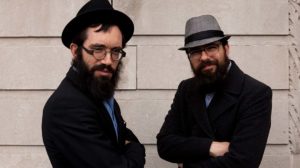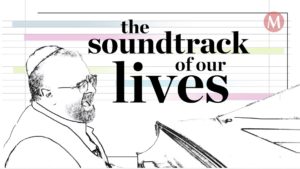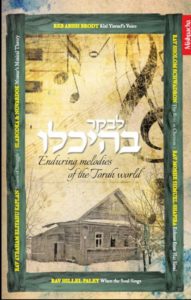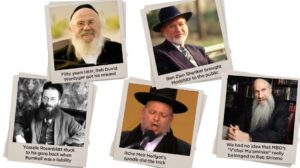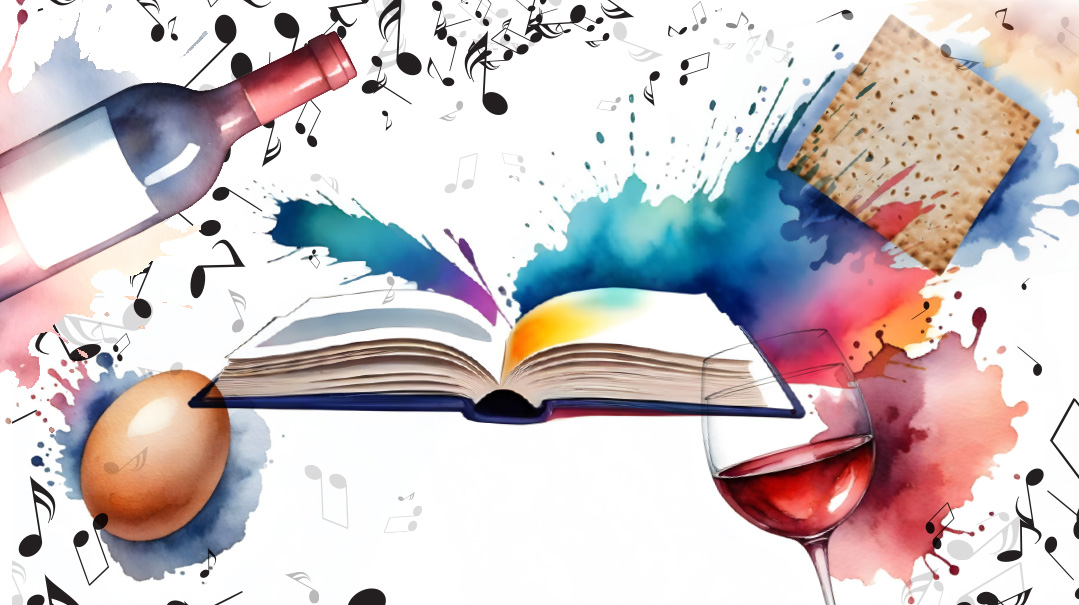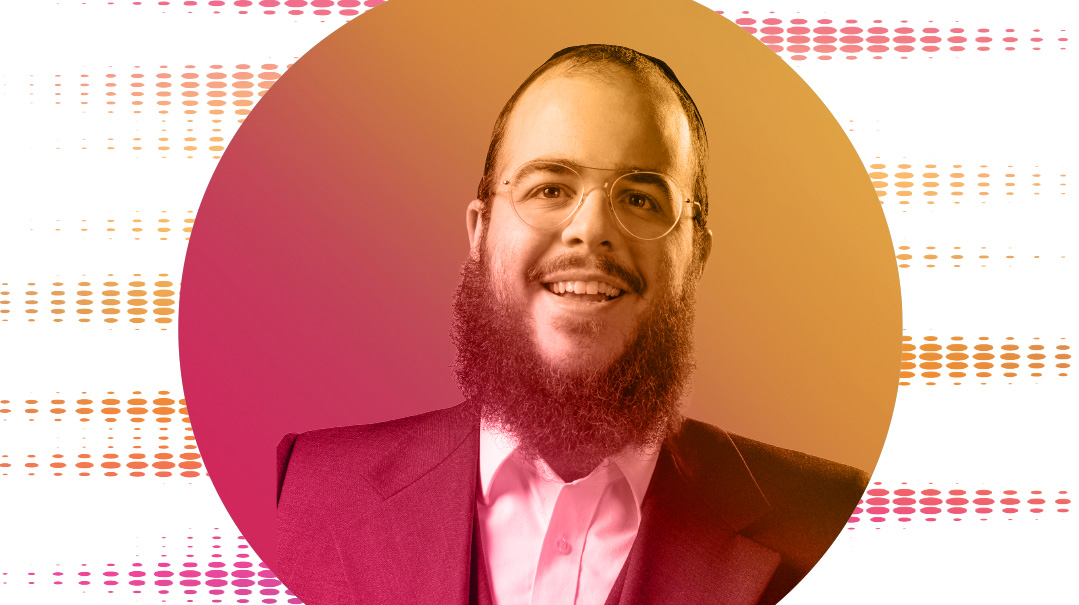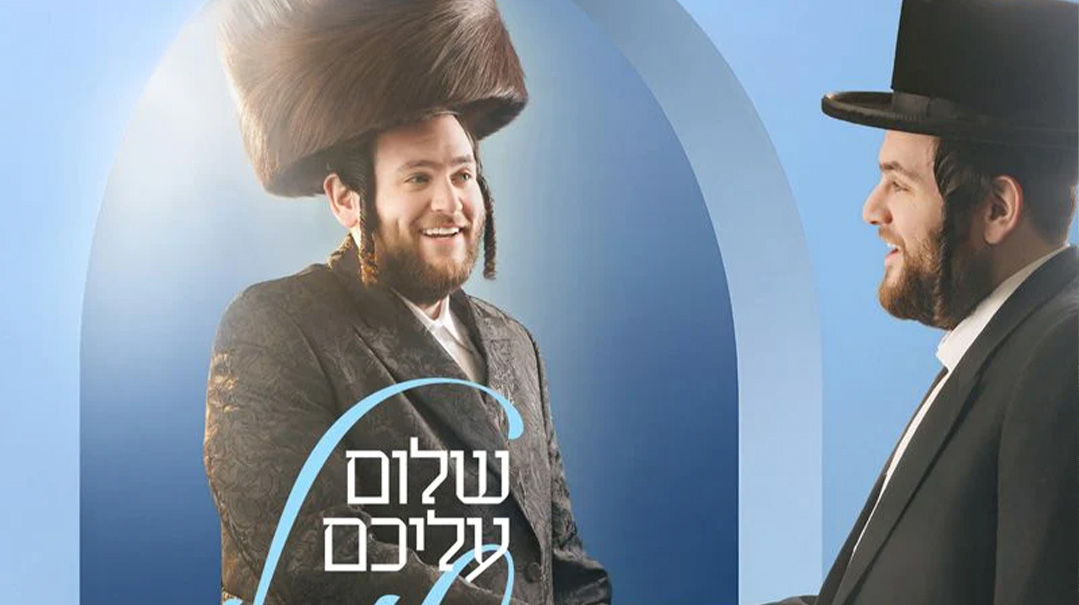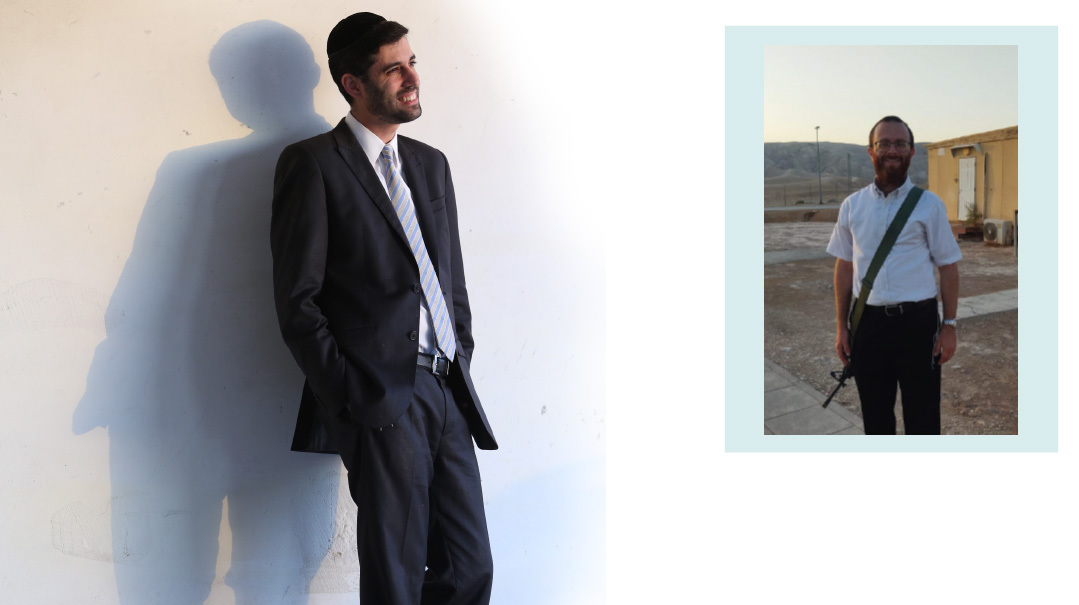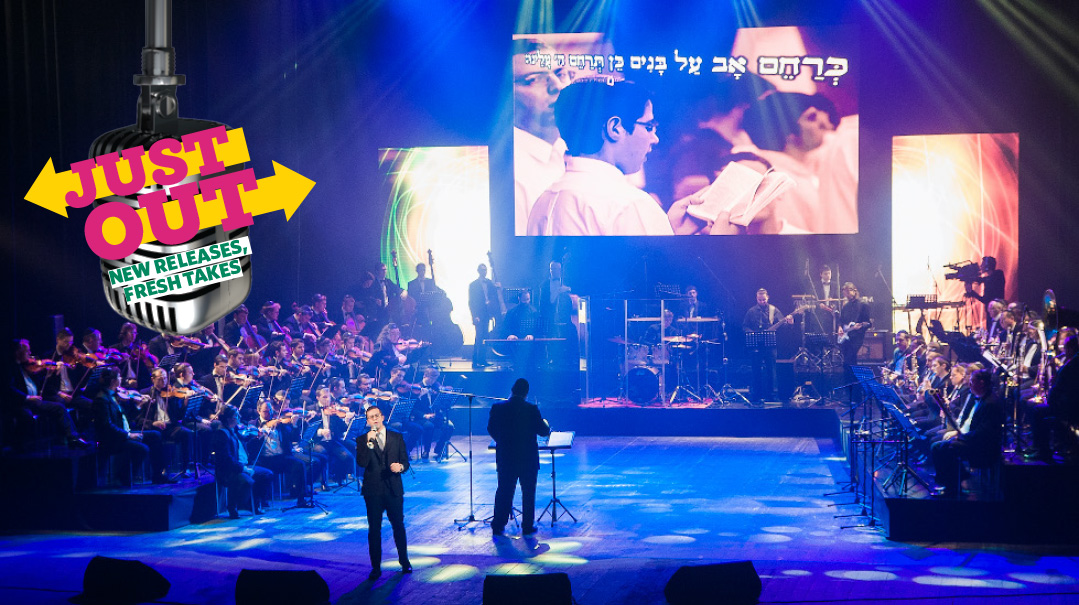A Song Born in the Beis Medrash: Rav Yitzchok Hutner — Remember the Era
| May 11, 2021“I never heard of the rabbi, but please tell him from me that if I were not Jewish, I would convert for this melody"
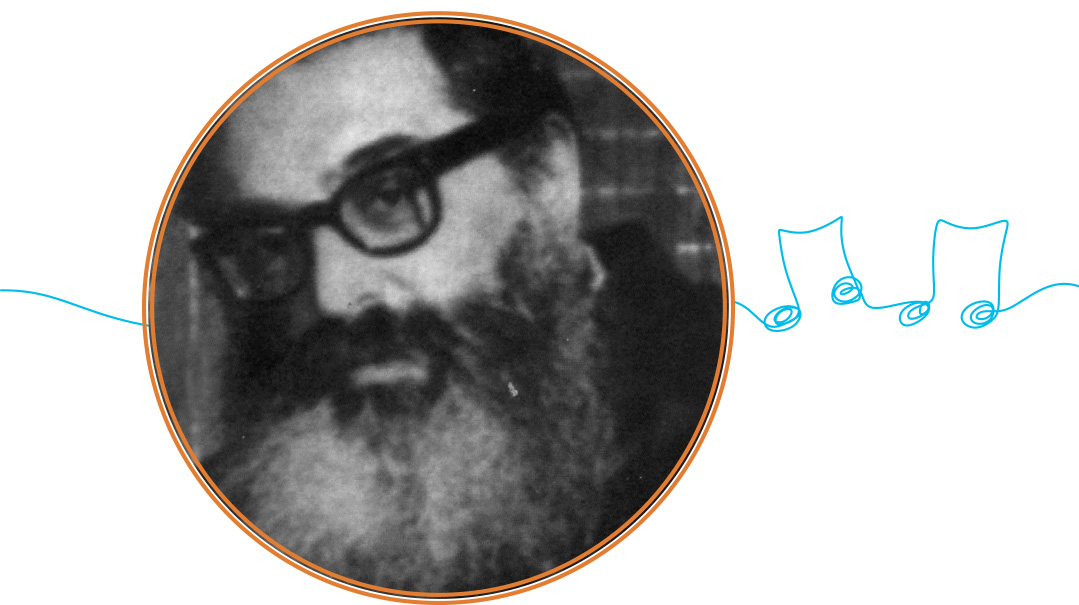
The beis medrash has always had a background hum, a melody of Torah that accompanies the holy, eternal words — and for certain venerated roshei yeshivah, music was known as integral to their avodah
The Rosh Yeshivah's love of niggun, and the way he used it to enhance the delivery of his world-famous maamarim, was legendary. In this way, he forged an unusual bond between mind and heart,” says Rabbi Yitzchok Alster, a rosh kollel in Jerusalem’s Har Nof and long-time composer himself, who was a close talmid of RAV YITZCHOK HUTNER (1906-1980). In fact, the niggunim that were sung during those exalted Yom Tov gatherings with Rav Hutner were viewed by many as part of the maamar itself. His son-in-law, Pachad Yitzchok rosh yeshivah Rav Yonason David, a tremendous talmid chacham in his right, has continued the tradition, and the niggunim continue to inspire another generation.
Prior to Rav Hutner’s years at Yeshiva Rabbeinu Chaim Berlin, singing and music generally had no pride of place in the world of Litvishe yeshivos. Even the “singing” parts of davening, such as Keil Adon and Hallel, were often recited tunelessly. Rav Hutner was a pioneer in the singing of niggunim, which is now a standard part of yeshivah life across the globe.
In 1960, Yeshiva Chaim Berlin produced a record called Torah Lives and Sings, which included some of Rabbi Alster’s compositions, such as the enduring classic “Yedid Nefesh” (the niggun often sung at Shalosh Seudos). At the time, Rav Hutner told his talmid Yitzchok Alster that he’d broken the norms and done this “so that there should be something by which people would remember the 1950s in Chaim Berlin.” Although the record never became a commercial success — it was professionally produced, but years before its time — Rabbi Alster says he understood the Rosh Yeshivah’s words years later, when he learned a Tosafos in Maseches Megillah that talks about how singing the words of the Mishnayos helps one remember it better. The melodies were a means to remember the Torah, and for Rav Hutner, niggun was also a tool for spiritual elevation and connection, and to recall a certain era.
Rabbi Alster attributes the inspiration of much of the music in his generation to the great Torah revival of the 1950s and 1960s of which Rav Hutner was a pivotal force. Rabbi Alster composed “Yedid Nefesh” as a bochur, sitting with a friend on the banks of Echo Lake, a small lake in the Catskills. At first, he had just the niggun, then the words came to him. In the late 1950s, the song was sung at Chaim Berlin’s Camp Morris, and years later was still being sung at Rav Yonason David’s Shabbos maamar.
Rabbi Alster also composed a moving song called “Heviani” as well the famous upbeat niggun of “Vehaviosim” in honor of the Rosh Yeshivah’s simchah, the engagement of his only daughter, Rebbetzin Bruria David. (This lively, well-known and enduring tune had been recorded by several artists over the years, including on Suki and Ding’s Torah album.)
“It was sung over and over at the chasunah,” the loyal talmid says, which was a huge honor for him at the time. And he remembers how, for the Rosh Yeshivah, it continued to endure. “In 1979, the Rosh Yeshivah was in Eretz Yisrael for what would be the second to last Succos of his life, and at the mesibah he asked someone to start that niggun. Now it's sung every Succos by Rav Yonason David.”
While the Rosh Yeshivah was partial to that song, he generally preferred niggunim without words. He sang very few songs with words, although Rabbi Dovid Cohen’s “Oim Ani Chomah” and the Modzhitzer “Omdos Hayu Ragleinu” were exceptions.
You Are My Refuge
One of the greatest treasures among all those Chaim Berlin songs is a niggun the Rosh Yeshivah composed himself, called “Neshamah” — a moving and very deep setting for the words “Neshamah shenasatah bi tehorah hi.” (The song was recorded much later on Shalhevet Orchestra’s Neshama Lach 4 double album.)
“I suspect he wrote it back in the Slabodka years,” says Rabbi Alster, “and I think that the words themselves inspired the niggun. When I was in the studio with the musicians of the New York Philharmonic who had been hired to play for the Chaim Berlin album, the [non-religious] leader of the orchestra approached me and asked who had composed this melody. I replied that it was Rabbi Yitzchok Hutner. He said, ‘I never heard of the rabbi, but please tell him from me that if I were not Jewish, I would convert for this melody.’ ”
The Rosh Yeshivah even told his closest students that this this niggun should be played while they walked to their chuppah. “In my case,” remembers Rabbi Alster, “I had composed my own niggun in honor of my chasunah, so I explained that to the Rosh Yeshivah. He replied, ‘Listen, you are marching down to my niggun. Your kallah can march down to your niggun.’ So, of course we did that. But he also explained to me why these words about the neshamah breathed into us by Hashem are fitting for the yom hachuppah: The marriage creates a new neshamah, that of chassan and kallah combined.”
Another gem is the famous “Bilvavi,” written by Rav Hutner based on a line in the Sefer Hachareidim by Rav Elazar Azikri. “Bilvavi” was originally sung in Chaim Berlin at Shalosh Seudos in Rav Hutner’s own niggun. Later, the words were sung to a stirring melody composed by talmid Rav Shmuel Brazil and first recorded on the iconic 1971 Ohr Chodosh album, its message “In my heart I will build a sanctuary for His honor...” has elevated thousands at kumzitzes for over five decades.
Rabbi Yissochor (Suki) Berry, a mashpia and prolific musical arranger (of Suki & Ding fame), is the son of a close talmid of Rav Hutner and also had his own formative personal relationship with the Rosh Yeshivah. He recalls that fateful September of 1970 when Rav Hutner and dozens of others were held hostage for weeks in Jordan after TWA Flight 741 was hijacked by the PFLP Palestinian terrorist organization. When Rav Hutner and his family were finally released the day before Rosh Hashanah, the entire Torah world breathed a sigh of relief — and Rabbi Berry’s father, Chazzan Yechezkel Moshe Berry, couldn’t go to sleep until he had made up a niggun to celebrate his rebbi’s release. That night, together with Suki and his brother, he recorded a new niggun with the words of Tehillim 91: “Yipol mitzidcha elef, urevavah miyeminecha... ki atah Hashem machsi.”
“When it was brought to Rav Hutner, the Rosh Yeshivah appreciated it,” says Rabbi Berry. “It represented his yeshuah from what he referred to as ‘me’eiver laYardein.’”
The emotions associated with this melody endured. During the final week of the Rosh Yeshivah’s life, Rabbi Berry took a shift at his side on a Friday night. He sang zemiros, but Rav Hutner did not respond. Then he sang this niggun: “Yipol mitzidcha elef...rak be’einecha sabit veshilumas reshaim tireh – Just look with your eyes and you will see the evil ones repaid.” Suddenly, the Rosh Yeshivah grabbed his hand and said “Farvoss?” [Why?]
“I panicked for a minute,” Rabbi Berry recalls. “But then I realized that he was asking on the pasuk — farvoss? Why will we see the punishment of the wicked? So I continued to the answer in the next pasuk and next part of the niggun: ‘Ki atah Hashem machsi – because You, Hashem, are my refuge,’ and the Rosh Yeshivah said it aloud with me. He had had a stroke, but he was living the pasuk we sang. It was unbelievable.” The Rosh Yeshiva asked for that niggun again during that week, and Rabbi Berry recorded it on a tape.
(Originally featured in Mishpacha, Issue 860)
Oops! We could not locate your form.


